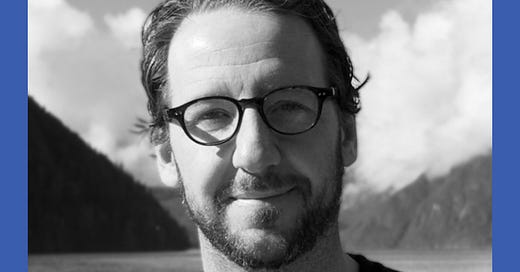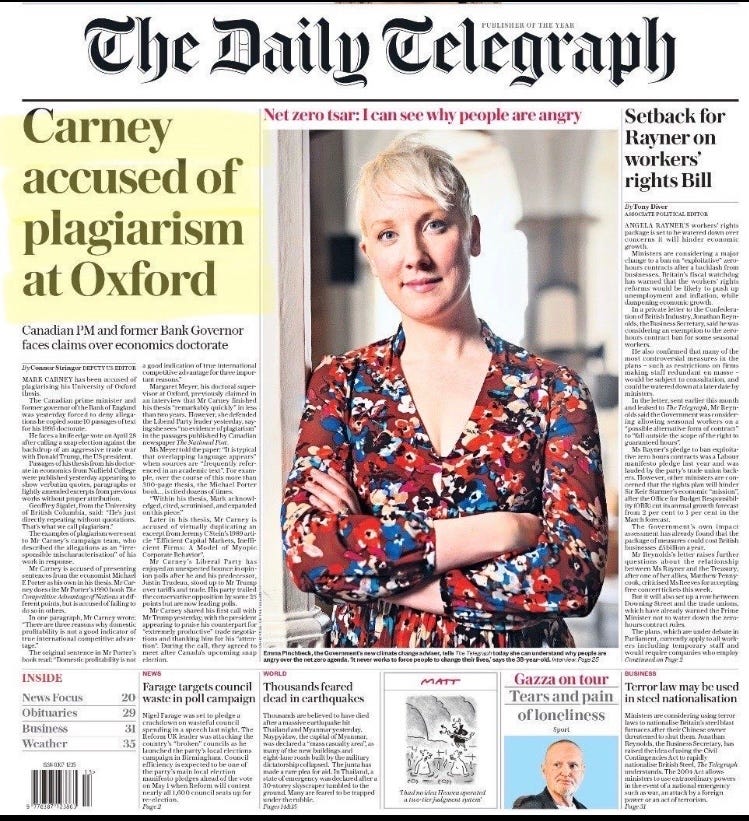The mystery of important stories left untold by Canada’s increasingly narrow mainstream media
The Eurasia Group’s fingerprints are everywhere and still no one seems interested in posing the question: who are these guys?
The difference between journalism and stenography isn’t the ability to report on the news: it’s the drive to discover what’s behind the easily seen and heard.
Stories that reveal where decisions are made - where power and influence are vested - are the ones that give context to the events of the day. They are the reports that lead to an informed public and present readers with the value propositions required for them to subscribe. And to trust.
After all, we no longer need journalists to rewrite news releases from city halls or school boards. Both of those have websites that give us the nuts and bolts on that information. So, too, with local police, fire services and sports team reports. In the event of an emergency, people are best informed directly by emergency services websites, provided they have connectivity,
We don’t need to go to the Toronto Star or National Post for informed opinions. Those can be found in abundance on Substack and elsewhere, so that when it comes to issues like gender dysphoria or events such as a plane crash there are paediatricians and pilots offering highly informed perspectives and analyses.
Just so in an election. If we want to know what Jagmeet Singh, Pierre Poilievre or Mark Carney said today, we can go to their websites or YouTube to see their clips.
Still, our media seem disinterested in going beyond the routine to pursue stories that tell us what’s really going on. As I wrote last week, we will probably never know how the plot to take out Justin Trudeau and install Carney as Liberal leader unfolded and who the key players were.
Nor is there significant movement to inform us just what role, if any, the Eurasia Group plays in Canada’s political life. This, despite the fact that is where the Liberal leader’s wife, Diana Fox, is working and, one assumes, will continue to do so if he wins the election. Gerald Butts, vice-chairman at Eurasia, is a former principal secretary to Justin Trudeau and, according to reports, is advising Carney’s campaign, which recently installed defrocked CBC host Evan Solomon, a member of Eurasia Group’s Management Committee and publisher of its GZERO Media as a Liberal candidate.
Finally, just what does the Eurasia Group do? Who is Ian Bremmer - its founder - and who were his backers when, at a young age and with a record of academic brilliance, he founded the company? And why has not a single one of the nation’s self-styled defenders of democracy asked him why he recently wrote with some certainty that, once the election is over, Canada will quietly acquiesce to US President Donald Trump’s demands? What led him to that conclusion? Is that view shared by Butts, Solomon and the Carney/Foxes?
This doesn’t have to be a story about foreign or corporate conspiracy. The facts could prove to be positive or negative. But what remains remarkable is Canadian mainstream media’s obvious disinterest in not just the Eurasia Group’s background and involvement in Canadian politics but the news value of Bremmer’s prediction.
Only Juno News, whose YouTube clip proved very popular, and John Ivison, who touched on Bremmer’s prediction in a Substack column, were curious - at least that I am aware of. Apologies to any I may have missed.
Similarly, while allegations of academic plagiarism against Carney made the front pages of three major newspapers in the UK, Canadian media seem largely disinterested in pursuing the story once it was broken by the National Post. Some didn’t bother with it at all. Peter Stockland will have more on this tomorrow.
There are other examples. CBC National completely avoided Carney’s dithering and denial over the Paul Chiang controversy (preferring on Sunday to inflame the two-day old Tory grumbling story followed by a hit piece on AB Premier Danielle Smith). It also quickly buried a story broken by its colleagues at Radio-Canada regarding Carney and Brookfield Asset Management’s use of an offshore tax haven in Bermuda. Ditto for a Journal de Montreal story tying Brookfield to US President Donald Trump’s son-in-law, Jared Kushner. And while many outlets were keen to highlight the bloviations and self-promotions of perennial malcontent lobbyist Kory Teneycke, there has been little inquiry into the state of the NDP campaign. In fact, there hasn’t been much coverage at all of the NDP. More on that in the days ahead.
Little wonder then that those interested in knowing the stories behind the stories are abandoning an increasingly narrow mainstream for rapidly growing fringes and amateur sleuths. A recent example can be found here, where someone with a pseudonym summarized the long and entrenched history and influence of the Bronfman family within the Liberal Party.
Some in the industry will likely excuse this by explaining that if only they had the resources they, too, would pursue these compelling tales. But if Brattani and Juno News can track them down, the problem isn’t money - it’s inspiration.
Too many modern newsrooms just lack the inclination, for reasons unexplained and unforgiven, to pursue anything other than that which crosses their desks or challenges the assumed verities of the day.
UPDATE: Shortly after RCMP confirmed they were looking into l’affaire Chiang last night, the Liberal candidate quit.
Here is an example of how journalists torque news by disguising bias with fact.
Mike Le Couteur, senior correspondent with CTV National News, introduced his observations of large rallies held by Conservative leader Pierre Poilievre by pointing to a table containing objects organizers had not permitted into a Surrey, B.C., venue.
Among the items were knives, e-cigarettes, three MAGA hats and a couple of signs.
“Poilievre has proudly repeated the quote from U.S. President Donald Trump that he’s “not a MAGA guy,” wrote Le Couteur, raising a digital eyebrow, “however, there are people with MAGA hats that showed up at the rally.”
Nothing about that statement is untrue. What is unprofessional is introducing it as an “Aha! Gotcha!” at the beginning of the story as opposed to as an anecdote at the end, if at all. There were 5,000 people at the rally and three hats were the takeaway? Why lead with the accoutrements of 0.001 percent of the audience? Why imply this represents an inconsistency in Poilievre’s statements when the fact the hats were not allowed into the event supports the statement that he is “not a MAGA guy?” Why make yourself look so unashamedly biased?
Most of all, why didn’t an editor take one look and kindly inform the reporter that he has 10 minutes to stop trying to be so goddamned cute and rewrite the bloody thing?
(Peter Menzies is a commentator and consultant on media, Macdonald-Laurier Institute Senior Fellow, a past publisher of the Calgary Herald and a former vice chair of the CRTC. He is also a National Newspaper Awards winner)






I am astounded that so much is not being reported. Could it be that our main stream media has been paid off? Canadians need the whole story.
As for Carney, people should be extremely concerned that foreign interference will not be taken seriously if he is elected. Why should we trust this man who has spent much of his life away from Canada, and who would take profits over country?
What I find disappointing is the acceptance of news releases without any effort to dig further.
A party announces a proposed tax cut and claims it will save the average citizen a certain number of dollars per year. You’ll rarely see anybody ask how that fits with their party’s philosophy or beliefs about taxation, how they’ll pay for the tax cut, what services they’ll no longer be funding, or whether their math is even correct. Nobody even asks why they’ve changed their mind from what they said six months ago, eg the Liberals and that capital gains tax or the consumer carbon tax.
As you’ve said, the main stream media just publish the news releases. Others are asking the tough questions.